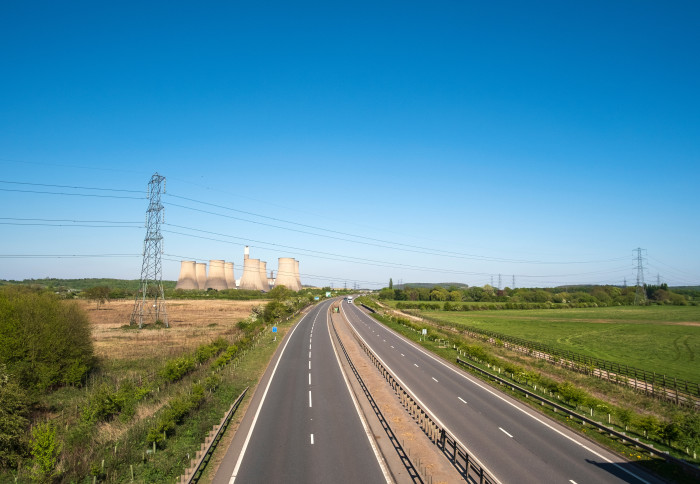

Lessons learned during Britain’s COVID-19 lockdowns could help us prepare for the energy system of the future, according to a new report.
The Energy Futures Lab Briefing Paper, a collaboration between research groups involved in the IDLES programme, investigates the impacts of the pandemic on the electricity grid and evaluates the long-term potential of COVID-19 policy interventions.
Analysis of smart meter and questionnaire data found that household energy consumption rose by over 10% during lockdown, but this rise was more than offset by a sharp fall in electricity demand nationally.
With many factories, shops, schools and offices closed, most of Britain’s electricity needs could be met by renewables like wind and solar power, leading to a reduction in the carbon intensity of the grid.
This factor, combined with a shift in household activities to less carbon-intensive times of the day and the elimination of the commute, meant that household emissions actually fell by 6.7% during lockdown.
It really does matter where electric vehicles are plugged in and where they’re demanding electricity, because that’s a huge draw on the grid Dr Aruna Sivakumar Co-author, Impacts of COVID-19 on the Energy System
“We hope never to experience such extreme lockdown conditions again, but one of the key takeaways from that period is the value of teleworking, particularly in terms of reducing carbon emissions,” says Energy Futures Lab’s Amy Trask, lead author of the Briefing Paper.
The report recommends consideration of longer-term work-from-home policies but suggests they be implemented on an opt-in basis in line with employee preferences. Over time, this shift could lead to smaller workplaces with smaller energy footprints.
The authors also call for policy coordination between teleworking and the roll-out of electric vehicles (EVs), which have the potential to drastically increase household electricity consumption. EV incentives, for example, could be designed to benefit workers who cannot easily work remotely.
“It really does matter where electric vehicles are plugged in and where they’re demanding electricity, because that’s a huge draw on the grid,” explains Dr Aruna Sivakumar, Director of the Urban Systems Lab, in a documentary video released alongside the Briefing Paper.
Grid challenges
The sudden and unprecedented fall in electricity demand, coupled with periods of high renewable penetration during lockdown, created challenges for the operators of Britain’s electricity grid.
The stability of the grid is normally maintained with the help of inertia, kinetic energy stored in the rotating masses of synchronous generators such as gas turbines, which is instantaneously released onto the grid when needed.
Since renewables don’t provide this buffer, National Grid ESO had to rapidly put in place new measures, detailed in the report, to maintain the delicate balance between supply and demand and prevent blackouts.
These included compensating smaller scale, distributed renewable generators to curtail their output, signing a bilateral contract with EDF to halve the output of the Sizewell B nuclear plant, and bringing gas plants online simply to provide inertia.
According to figures published separately by National Grid ESO, the total cost of such services between May and July 2020 was approximately three times higher than the same period in 2019.
“For the future, we can learn from this period and try to find ways to deal with stability in a highly renewable grid but in a more cost-effective manner,” says Dr Luis Badesa, Research Associate at Imperial’s Department of Electrical and Electronic Engineering.
“Instead of procuring more and more inertia, we could somehow replace it with a fast power injection from new technologies such as battery storage. That’s the kind of future where we would deal with stability in a smarter way with more renewables, rather than turning on gas plants.”
Click here to download the Briefing Paper.
Trask, A., Wills. K., Green, T., Staffell, T., Auvermann, O., Coutellier, Q., Muûls, M., Hardy, J., Morales Rodiguez, D., Martin, R., Sivakumar, A. Pawlak, J., Imani, A.F., Badesa, L. & Strbac, G. (2021) Impacts of COVID-19 on the energy system, An Energy Futures Lab Briefing Paper, Imperial College London. Available at: https://www.imperial.ac.uk/energy-futures-lab/policy/briefing-papers/paper-7/
Watch our mini-documentary on Britain's energy under lockdown
Supporters

Article text (excluding photos or graphics) © Imperial College London.
Photos and graphics subject to third party copyright used with permission or © Imperial College London.
Reporter
Conor McNally
The Grantham Institute for Climate Change

Contact details
Email: c.mcnally@imperial.ac.uk
Show all stories by this author




